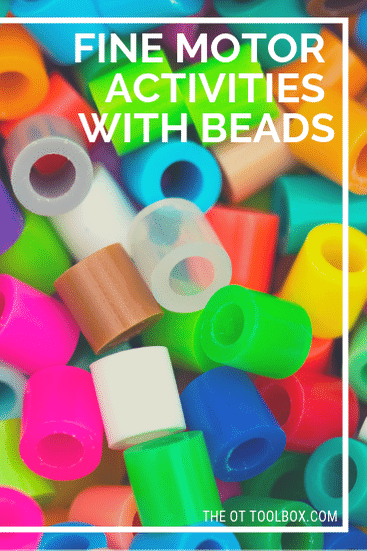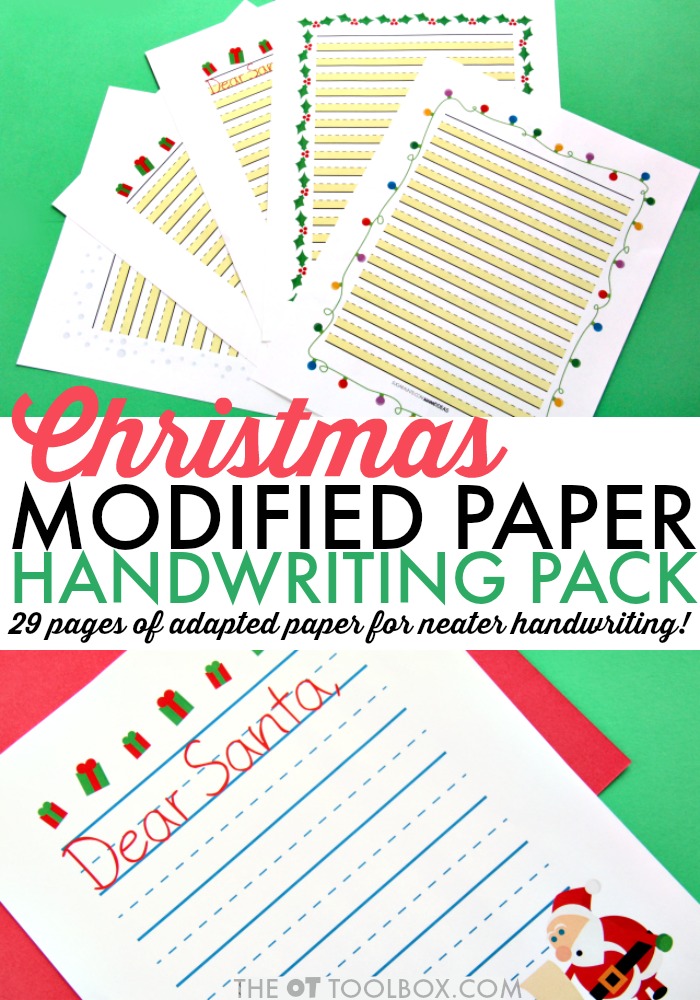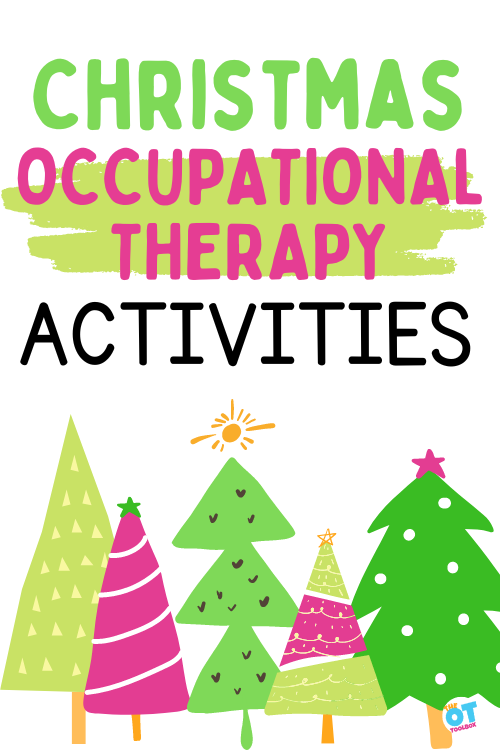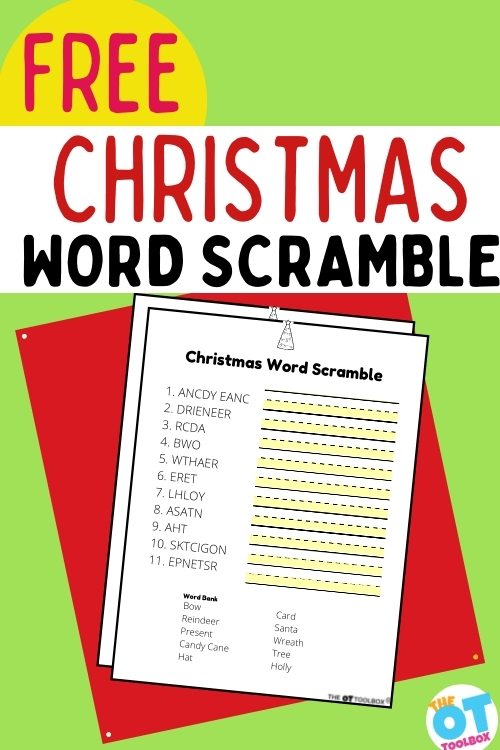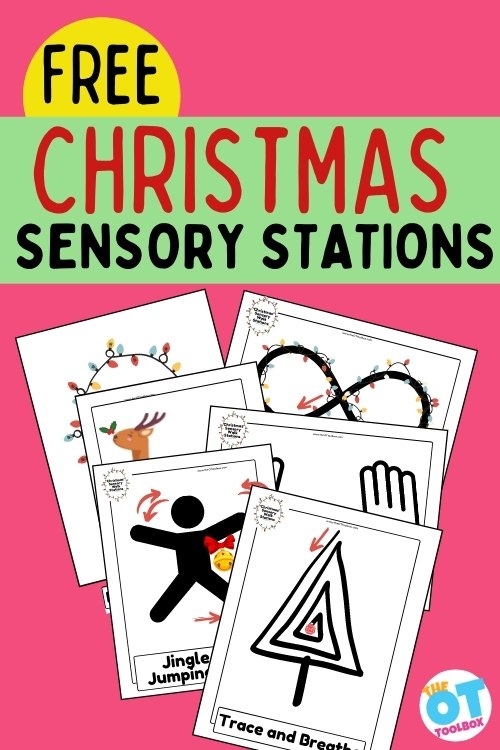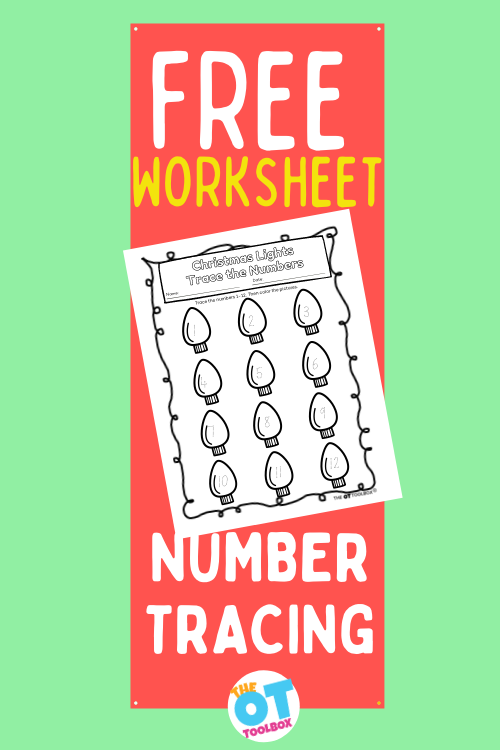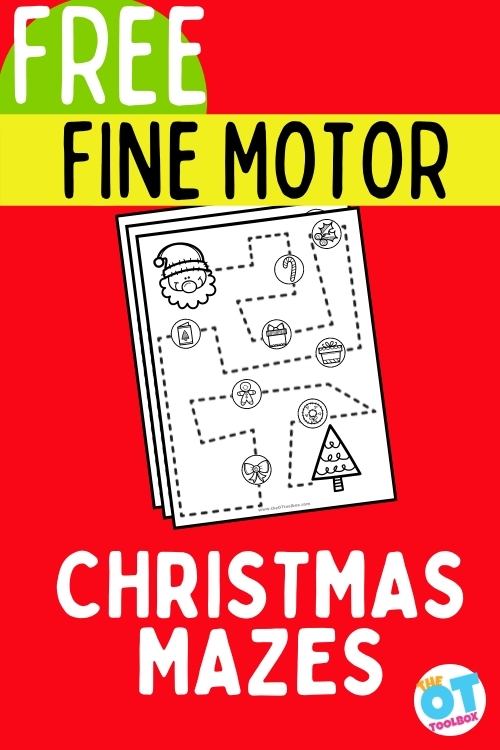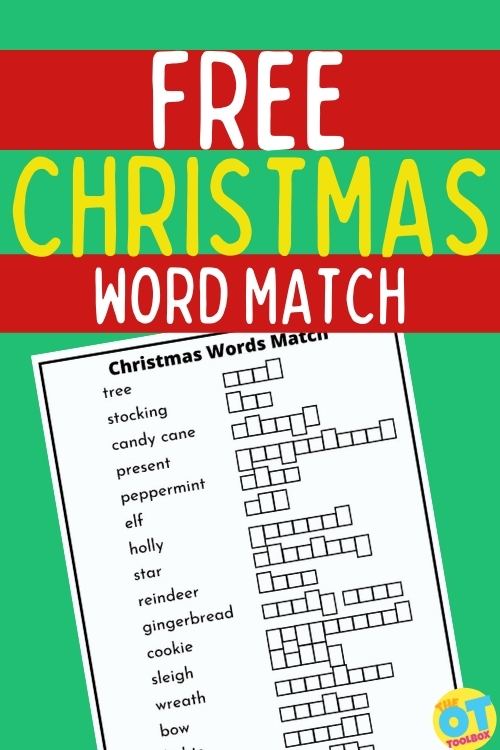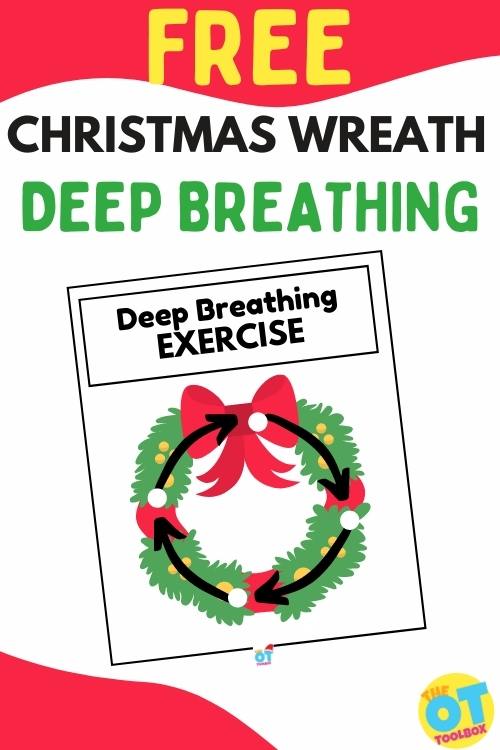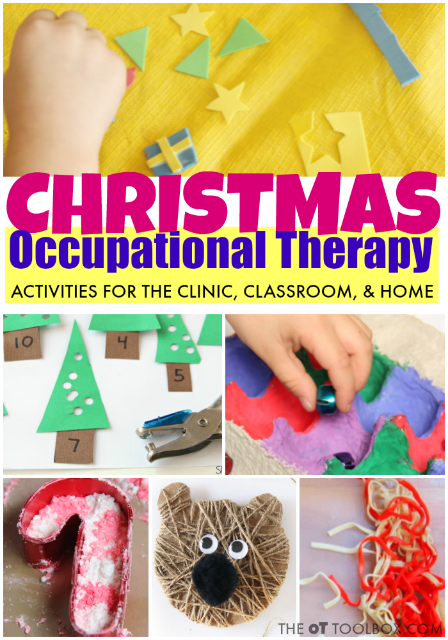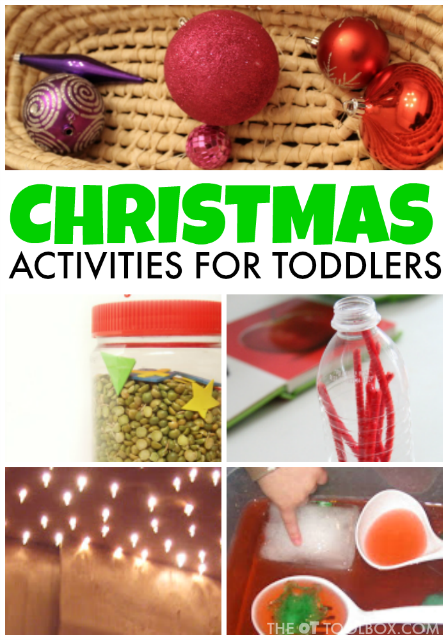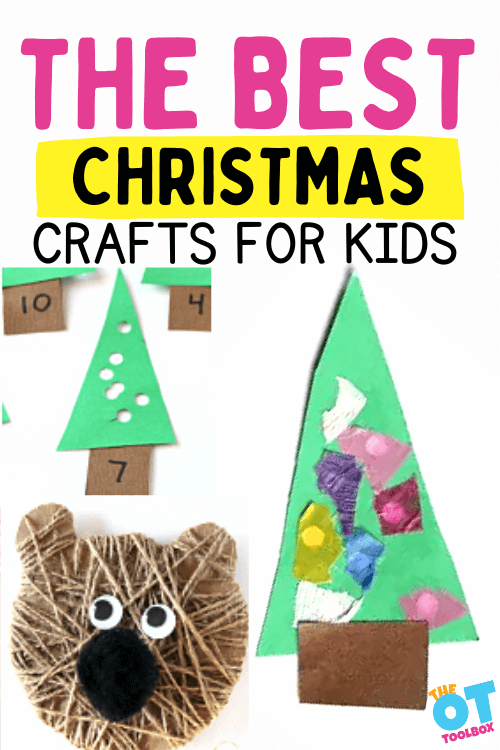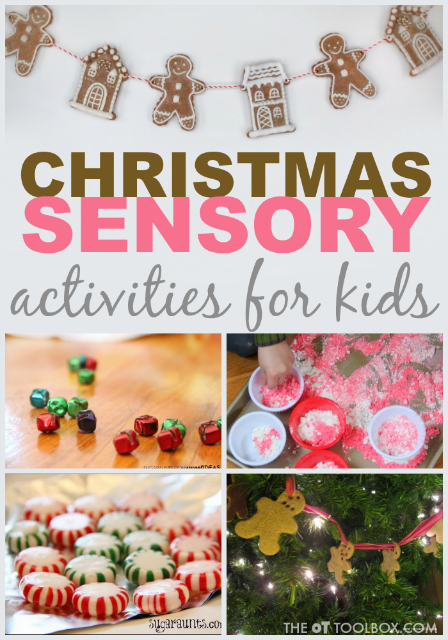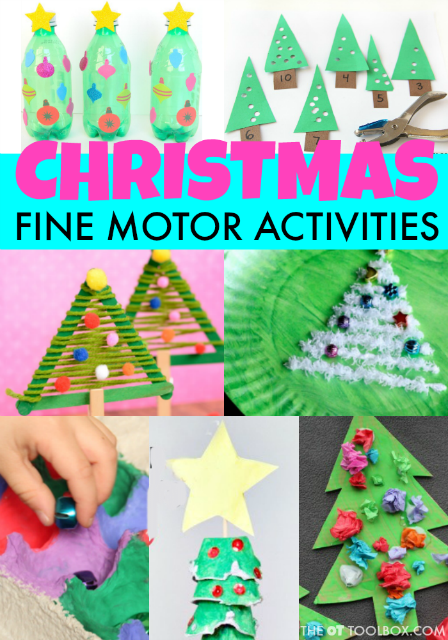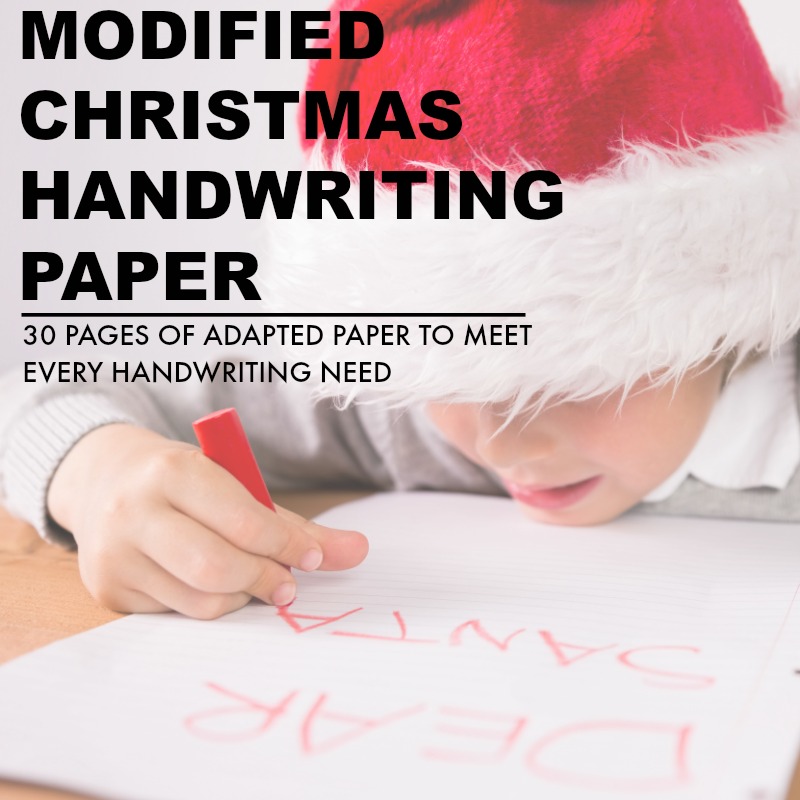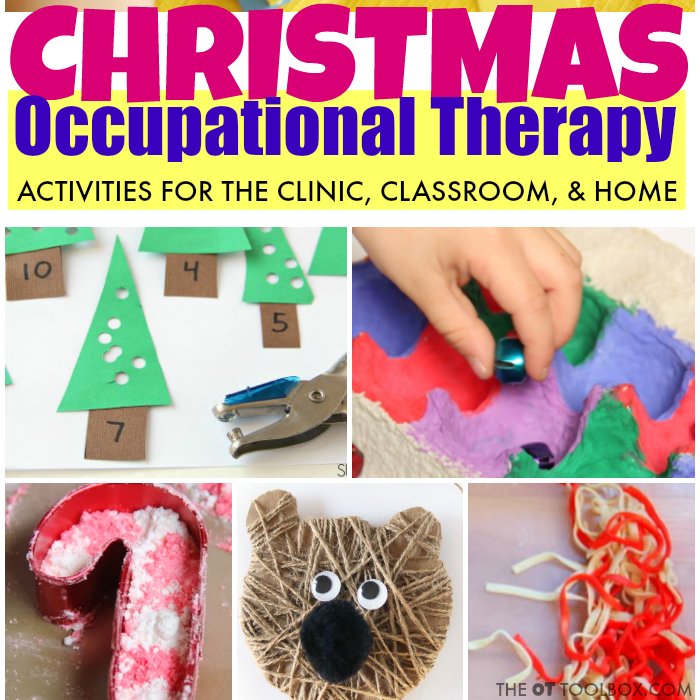If you are looking for a few Christmas activities (or a holiday calendar to send home for the Christmas break), then this December occupational therapy calendar is for you! We pulled a few of our favorite Christmas occupational therapy activities and put them onto a printable holiday activities calendar so you can print and go!
You’ll also want to check out our 25 days of Christmas ideas because you can grab 25 printable OT ornaments…perfect for decorating the tree in a therapy clinic!
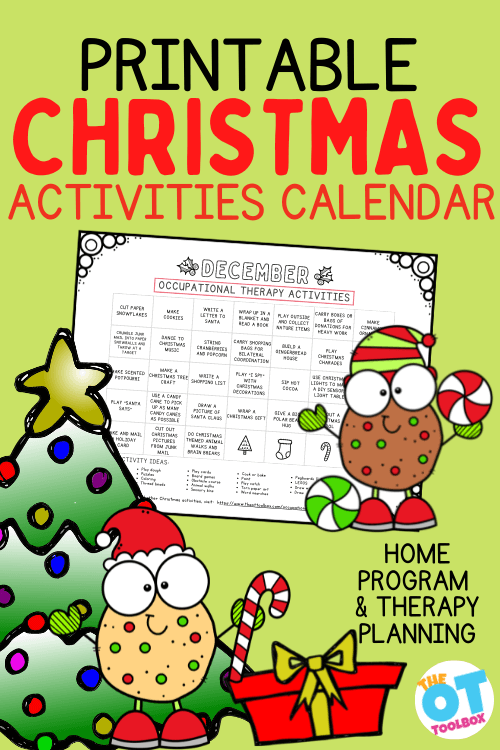
Christmas activities calendar
The Christmas season is a hectic and chaotic time. With holiday parties, altered schedules, and never-ending to-do lists, Christmas can be overwhelming for adults and kids. Children see and hear everything and the Christmas time stress is no exception. These Christmas occupational therapy activities can be used in the clinic, home, or in a home program during the holidays. Scroll on for some fun OT holiday activities the whole family will enjoy while targeting various needs!
Christmas Occupational Therapy Activities
Adding to the therapy plans, a few occupational therapy Christmas activities is as easy as adding a holiday themed therapy activity or a planning to use a Christmas item such as a stocking, wreath, or candy canes into therapy games.
Children with sensory or developmental needs and typically developing kids feel the sense of chaos this time of year. The overload of sensory input can be exhausting to children with difficulty in processing input from their environment. I mean, it’s overwhelming for me, too!
With all of the excitement of the season, it can be hard to keep to sensory integration strategies to help with coping in over stimulating situations. Sensory kiddos can also show over or under-responsiveness to new situations, too. Imagine walking into a crowded holiday party with music, lights, a dancing crowd, scents of different and weird foods, and lots of overlapping voices.
A child can easily become over excited or over protective as they attempt to protect themselves from this noisy, smell party!
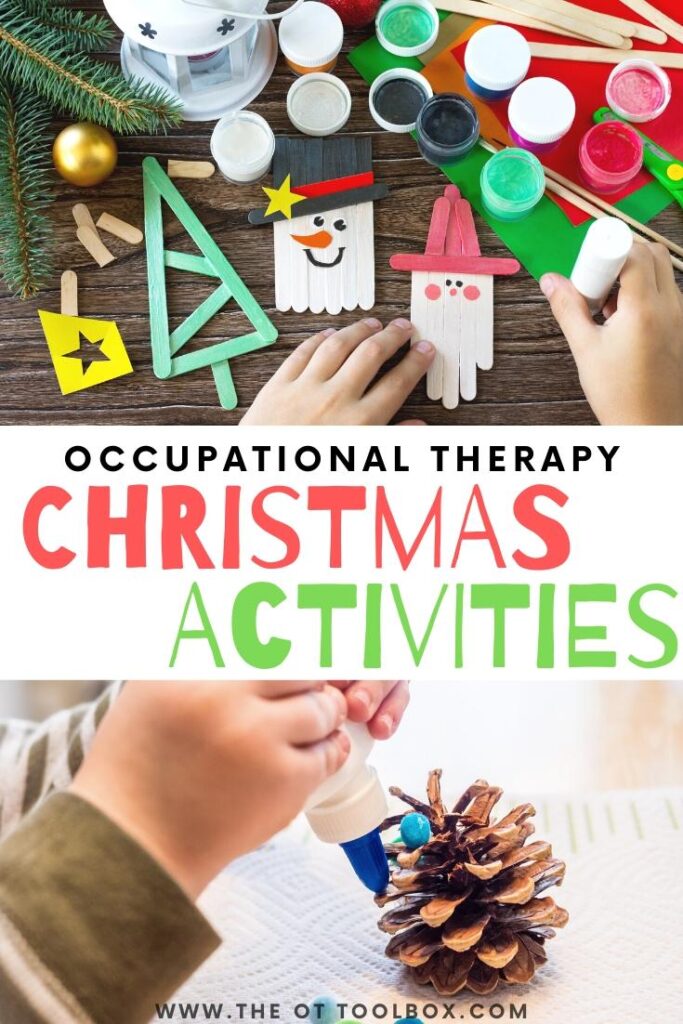
Christmas OT Activities for kids
Kids who are working on specific skill areas like fine motor or gross motor development can easily become distracted in the excitement of the season and allow practice areas and goals to slide just a bit. I mean, there are a lot of fun things a kid can be doing…why would they want to work on their letter formation and handwriting??! Adding a few Christmas OT activities for kids to work on various needs can make the therapy “work” more fun and meaningful.
So, with the upcoming season of busy craziness, I wanted to put together this Occupational Therapy Christmas Calendar.
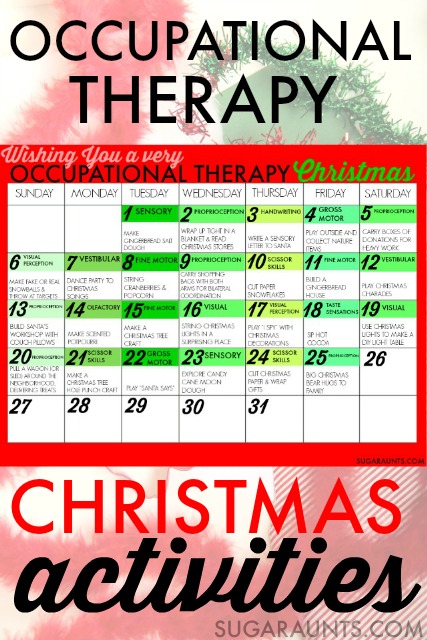
It’s a way for kids and families to connect and cope during this busy season through holiday festivities, while simultaneously working on many Occupational Therapy goal areas. Work on fine motor skills while building that gingerbread house. Calm down with proprioceptive input while snuggled up in a blanket with the family and a good Christmas book. These are Christmas-y ideas that will keep your whole family connected this year.
This post contains affiliate links.
Occupational Therapy Christmas Activities
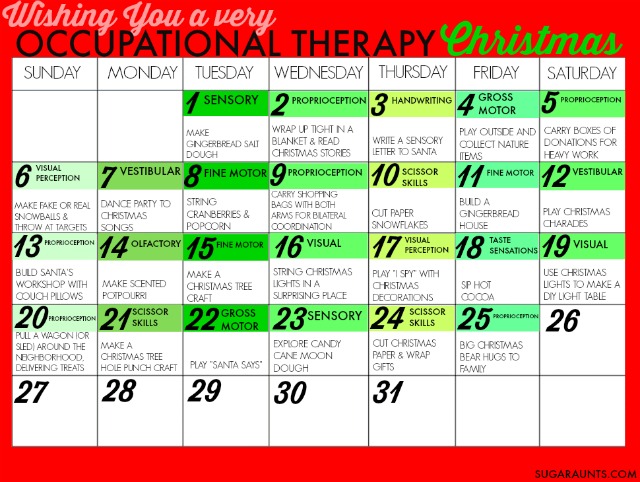
Add these ideas to your Advent calendar for a Very Occupational Therapy Christmas!
NOTE: Many skill areas are addressed with each activity. You might be working on specific areas like calming activities, or handwriting. Try to adapt the activities below to fit your child’s needs.
The list below can be done in any order. This is meant to be an easy way to fit Occupational Therapy practice areas into everyday Christmas fun.
If a day is a little too hectic to fit in an activity, switch it around and do a different activity. The most important message is to connect with your family and meet the needs of each member in fun and festive ways this Christmas!
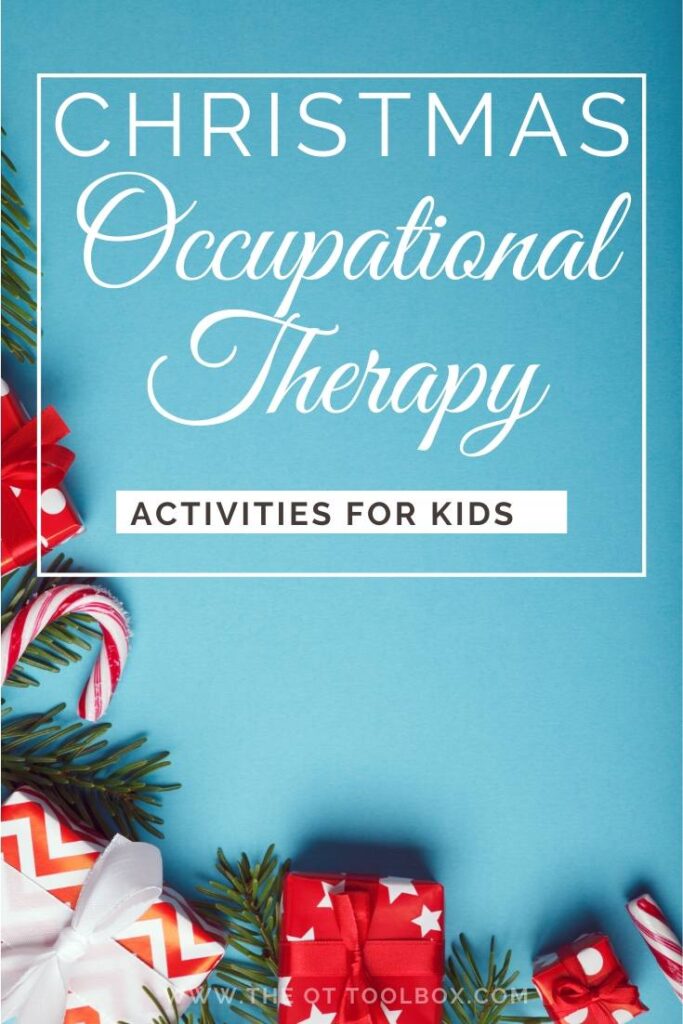
Christmas Calendar Ideas
Note that some of the calendar days are slightly different than on the printable Christmas activity calendar below. From playing in the snow to creating your own Christmas memory game…the options are limitless when it comes to making memories and building skills!
Day 1 Make gingerbread salt dough to address fine motor, proprioceptive, and olfactory areas. Cut out gingerbread men and make a garland…or just play with the dough! You can keep it in a covered dish or plastic bag to play again and again.
Day 2 Wrap up tight in a blanket and read Christmas stories for proprioceptive input. A warm blanket is calming. Wrap your child up like a burrito or full body proprioception.
Day 3 Write a letter to Santa. Provide creative handwriting modifications for fun.
Day 4 Play outside and collect nature items. Use them to make collage art or create a table-top sensory table.
Day 5 Carry boxes of donations for heavy work input. This time of year, many families donate to others. Kids can carry boxes and bags for proprioceptive input while doing a good deed.
Day 6 Make snowballs and throw at targets. If you don’t have snow where you live, make fake snow for sensory fun. Be sure to take this activity outside! Throwing at a target is a great hand-eye coordination activity. Packing together snowballs requires bilateral hand coordination and proprioceptive information to determine how much pressure is needed. Don’t let that snowball smash in your hands by packing it together too hard!
Day 7 Have a family dance party to Christmas music. Be sure to swing, twirl, jump, and spin or loads of vestibular input.
Day 8 Work on fine motor skills and string cranberries and popcorn on thread with a needle. Managing a needle and thread is a fine motor skill similar to tool use. Threading popcorn and cranberries works on tripod grasp, bilateral hand coordination, hand-eye coordination, visual scanning, visual tracking, patterning, and more.
Day 9 Carry shopping bags in both hands for bilateral coordination and proprioceptive input. Not going shopping? Fill shopping bags at home with cans from the cupboard. Create an obstacle course to work on motor planning.
Day 10 Cut paper snow flakes to work on scissor skills. Try cutting coffee filters, newspapers, cardstock, foam craft sheets. and tissue paper for lots of textures and line accuracy practice.
Day 11 Build a gingerbread house and work on fine motor skills. Encourage tip to tip pincer grasp by providing very small candies. To amp it up a bit, add a pair of tweezers and have your child pinch with a tripod grasp. Provide an icing bag to work on gross grasp, too.
Day 12 Play Christmas Charades for gross motor and vestibular input. Encourage movement actions like Santa filling his bag, building a snowman, wrapping presents, and shopping.
Day 13 Encourage proprioceptive input by showing your kids how to build a Santa’s workshop with couch cushions and pillows. Lifting heavy cushions is a great heavy work activity. Once done, kids can calm down in their couch cushion workshop under blankets and pillows. Add a few toys and pretend hammers from a toy tool set for pretend play and problem solving in this Santa’s workshop activity.
Day 14 Make scented potpourri with scents of the season. Kids can work on scissor skills and fine motor skills by cutting evergreen stems, orange peels, and pulling bits of bark from evergreens. The scents of this potpourri will fill the home and a fun way to explore the olfactory sense.
Day 15 Make a Christmas Tree Craft and work on fine motor skills, bilateral hand coordination, and strength. Kids will feel a sense of accomplishment when they see their tree decorating the house all season long.
Day 16 Provide a visual sensory activity by stringing a strand of Christmas lights in a surprising place like on the ceiling, along the tops of doorways, or under a dining room table. Twinkly lights can be used in a calm-down area. Kids can help to string the lights and use bilateral hand coordination, executive functioning and motor planning to figure out where to place lights, hold up the strand, peel and tear tape, and stick it to the lights.
Day 17 Work on visual scanning and other visual perceptual skills like figure ground by playing a Christmas version of “I Spy”. Use the decorated Christmas tree as a decoration station: Ask your child to locate a specific colored ornament as they visually scan the tree. For more fun, play the game while lying on the floor and looking up at the tree.
Day 18 Make and drink hot cocoa. The warm drink provides a temperature sensation that is different and new. Add ice cubes and candy canes for more textural taste sensations. Following multiple step directions in a cooking with kids activity works on so many problem solving, math, and sensory skill areas.
Day 19 Use Christmas lights to create a DIY light table. Use it for handwriting practice including line awareness, spatial awareness, letter formation, tracing, and drawing. This is a visual activity that kids will love.
Day 20 Cook up goodies (or wrap pre-packaged treat!) and plan a good deed for neighbors. Load up a wagon or sled and deliver the treats around the neighborhood. Pulling a wagon or sled is a proprioceptive activity that can be calming and grounding.
Day 21 Improve hand strength with this fine motor Christmas Tree craft using a hole punch for proprioceptive input to the hands. Decorate the house with the trees, or create a banner for the mantle.
Day 22 Work on gross motor skills by playing “Santa Says”. Just like the game Simon Says, kids can copy and listen to directions and motor plan, actions. Be sure to incorporate bilateral coordination and crossing midline for a brain break activity. Use these Simon Says commands to get you started.
Day 23 Explore the sense of touch and scent with this Candy Cane Moon Dough sensory bin. Work on fine motor skills and tool use by scooping and filling cups and cookie cutters.
Day 24 Wrapping presents is a powerhouse of developmental activities: Measure paper to fit packages, Cut paper with scissors in a strait line, Fold paper, Tear and Cut tape, Stick tape along edges of paper. Practice motor planning, problem solving, and executive functioning by crossing an item from your to-do list and wrapping a present or tow with your child.
Day 25 Celebrate Christmas Day with big Christmas bear hugs with family and friends. Hugs are great for proprioceptive input to the body.
Enjoy the season with your family and make each and every moment count
Printable Christmas Activity Calendar
Want to print off a calendar of occupational therapy ideas to support parents? It’s a great way to send kids off to the holiday break with therapy ideas that support skill-building AND celebrate the season. You can grab a copy of this printable calendar by entering your email address into the form below.
The OT Toolbox Member’s Club members will also find this printable calendar inside the Member’s Club in the Therapist Tools section (Level 1 members) and in the Christmas Therapy Theme (Level 2 members).
OT Christmas ACTIVITIES
Extend the OT Christmas activities further by asking kids to write out the therapy schedule on Christmas modified paper to work on handwriting. This is a great holiday activity for the clinic while working on a variety of occupational therapy goals. Clients can then cross off items as they are completed. Grab a copy of this modified Christmas handwriting paper here and work on handwriting with bold lined paper, highlighted lined paper, and color coded paper…all with a Christmas theme!

Colleen Beck, OTR/L has been an occupational therapist since 2000, working in school-based, hand therapy, outpatient peds, EI, and SNF. Colleen created The OT Toolbox to inspire therapists, teachers, and parents with easy and fun tools to help children thrive. Read her story about going from an OT making $3/hour (after paying for kids’ childcare) to a full-time OT resource creator for millions of readers. Want to collaborate? Send an email to contact@theottoolbox.com.

